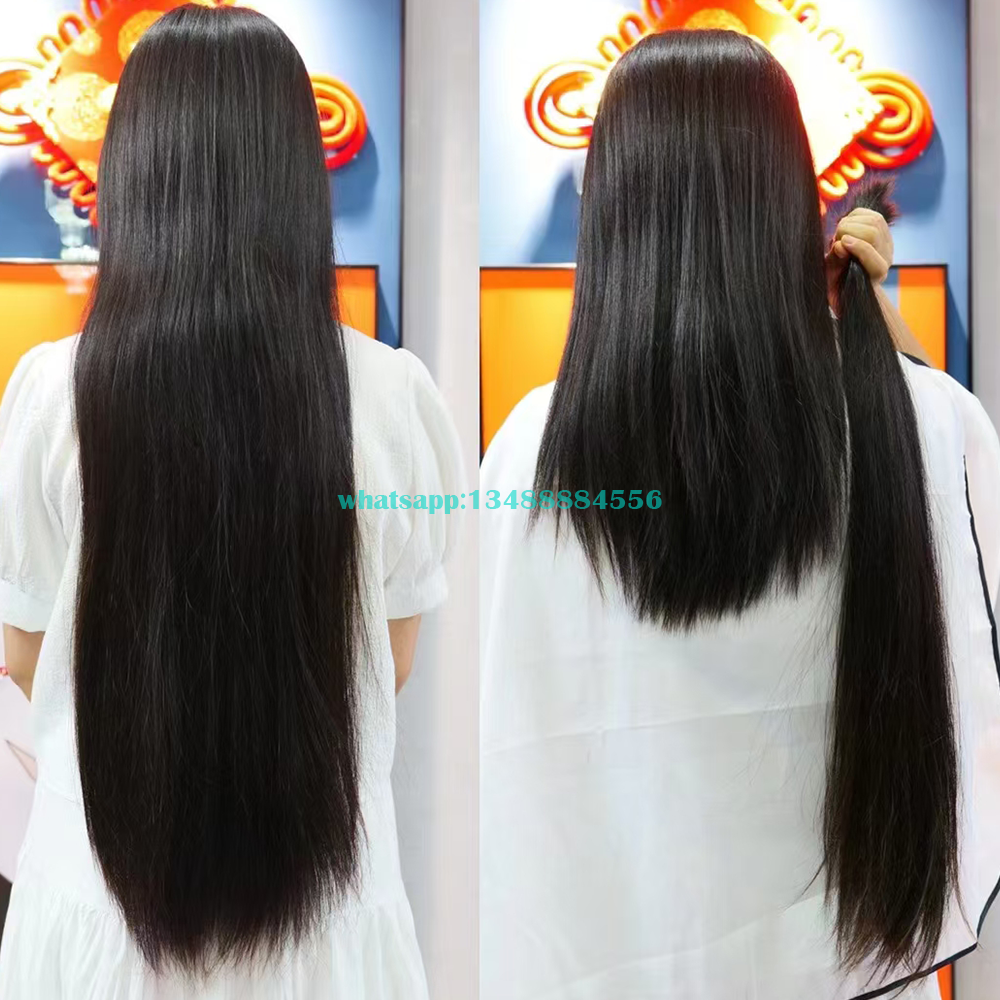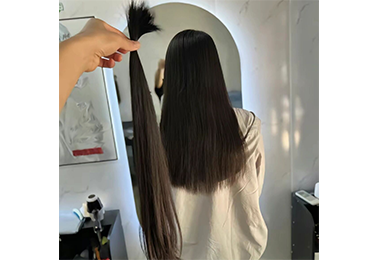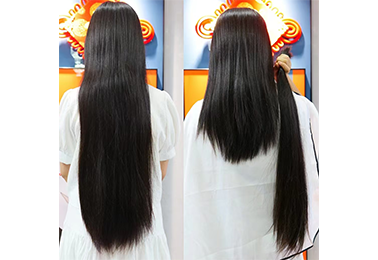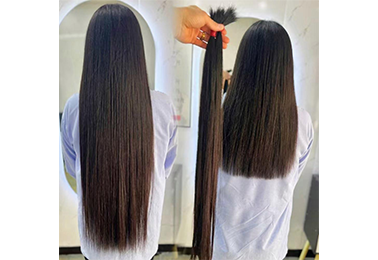The Complete Guide to Importing Chinese Bulk Human Hair for Salons
Views :
Update time : 2025-07-25
The Complete Guide to Importing Chinese Bulk Human Hair for Salons
In the dynamic world of the beauty industry, especially for salons, sourcing high - quality hair products is crucial. Chinese bulk human hair has emerged as a popular choice among salon owners globally, thanks to its variety, competitive pricing, and relatively good quality in many cases. This comprehensive guide will walk you through everything you need to know about importing Chinese bulk human hair for your salon.

The Chinese Human Hair Market Landscape
China has firmly established itself as a dominant force in the global human hair market. In 2022, its human hair export output reached an impressive $1.88 billion, topping the world in hair exports to international markets (OEC.world). The industry has seen substantial growth over the past decade, with both domestic demand and exports on the rise.
Key Production Hubs
- Xuchang, Henan: Revered as the “World’s Hair Capital,” Xuchang is home to a vast number of hair factories. It has a long - standing reputation for its advanced hair - making techniques and a wide range of products.
- Yiwu, Zhejiang: This east - China manufacturing hub is known for its bustling trade and is a significant contributor to the hair industry. It offers a diverse selection of hair products, often catering to a more budget - conscious market segment.
- Qingdao, Shandong: With its well - developed manufacturing infrastructure, Qingdao also plays a crucial role in the production and export of human hair products.
Approximately 70% of the hair manufactured in these regions is destined for the global market, with the United States, Europe, and Africa being major importers.
Diverse Product Range
When it comes to Chinese hair extensions, the market offers an extensive array of products:
- Hair Wigs: Available in various styles, lengths, and cap constructions, from full - lace wigs for a natural look to synthetic - based wigs for more affordable options.
- Hair Extensions: Whether it’s clip - in, tape - in, or sew - in extensions, Chinese suppliers can meet different customer preferences. The hair comes in different textures such as straight, wavy, and curly.
- Hair Bulk: This is a popular choice for salons that want to customize hair extensions. The bulk hair can be used to create wefts or other types of extensions. It is available in different grades, typically ranging from 6A to 12A, with higher grades indicating better quality.
- Frontals and Closures: These products are essential for creating a seamless and natural - looking hairline. They come in different sizes and hair densities.
Hair Origin
It’s important to note that while China is a major exporter of human hair products, it also imports a significant amount of hair, primarily from India and other Asian countries. In fact, 90.3% of India’s total international exports of human hair for wigs are imported by China. The hair imported into China is often in the form of hairballs or hair trash, which are then processed. This imported hair forms the basis for many of the Chinese - made hair products, which can sometimes lead to variations in quality.
Pricing Spectrum
The price of Chinese human hair varies widely, typically ranging from \(200 - \)1000 per bundle, depending on factors such as hair type, quality grade, and length. Generally, Chinese hair is positioned in the lower - to - mid - price segment of the global hair market. However, there are also premium - quality products available for those salons that demand high - end offerings. For example, lower - grade mixed hair might be on the more affordable end, while top - quality virgin human hair will command a higher price.
Pros and Cons of Importing Chinese Bulk Human Hair
Before diving into the import process, it’s essential to weigh the advantages and disadvantages.
Advantages
- Economies of Scale and Cost - Effectiveness: China’s large - scale production capabilities, driven by advanced technology and a skilled labor force, enable suppliers to offer competitive prices. This is especially beneficial for salons looking to purchase in bulk, as they can achieve significant cost savings.
- Product Diversity: The wide range of hair products available means that salons can find exactly what they need to meet the diverse demands of their clients. Whether it’s a specific hair texture, color, or length, the Chinese market is likely to have a suitable option.
- Reliable Production and Delivery: Many Chinese suppliers have well - established production facilities and efficient supply chains. Once you find a reliable supplier, you can expect consistent product availability and timely delivery, which is crucial for running a successful salon.
Disadvantages
- Quality Variability: Due to the complex supply chain and the mixing of hair from different sources, there can be significant variations in the quality of Chinese human hair. Some products may look great initially but degrade quickly, leading to customer dissatisfaction.
- Ethical Concerns: There have been reports of unethical practices in the Chinese hair industry, such as smuggling of hair from other countries, exploitation of workers, and the use of low - quality or unethical ingredients. Salons need to be vigilant and work with suppliers who adhere to ethical standards.
- Unclear Origin: As mentioned earlier, since much of the hair used in Chinese products is imported from other countries, it can be challenging to trace the exact origin of the hair. This lack of transparency may be a concern for some salons and their clients.
Importing Process: A Step - by - Step Guide
Step 1: Market Research and Product Selection
- Understand Your Salon’s Needs: Determine the types of hair products that are in high demand among your clients. Consider factors such as hair texture (straight, wavy, curly), length, color, and quality grade. For example, if your salon caters to a predominantly African - American clientele, you may need to focus on curly and kinky - textured hair extensions.
- Research Trends: Stay updated on the latest trends in the hair industry. This could include new hair colors, innovative extension methods, or popular styles. By offering trendy products, you can attract more customers and stay ahead of the competition.
Step 2: Sourcing Reliable Suppliers
- Online Platforms: Utilize well - known e - commerce platforms like Alibaba.com. Search for terms such as “china hair vendor,” “wholesale hair factory in china,” etc. These platforms provide a wide range of suppliers, along with customer reviews and product catalogs.
- Social Media and Google: Instagram is a great place to discover hair suppliers. Many Chinese suppliers showcase their products on Instagram, allowing you to get a visual feel for their offerings. You can also use Google to search for hair suppliers in China, but be cautious and thoroughly vet the companies you find.
- Verify Supplier Credentials:
- Website and Contact Information: A legitimate supplier should have a professional - looking website with clear contact information. Check for details such as the company’s address, phone number, and email.
- Product Catalog and Reviews: Browse through the supplier’s product catalog to assess the quality and variety of their products. Look for customer reviews and feedback, both on the supplier’s website and on independent review platforms.
- Legal Documents: Request legal documents such as the company’s business registration information and sales contracts. This will help you ensure that the supplier is operating legally and is reliable.
- Direct Communication: Use an international messaging app to contact the suppliers. If you find a supplier on Alibaba, use the platform’s messaging system to communicate directly. Ask detailed questions about the product, such as quality grade, minimum order quantity (MOQ), price, and order delivery cycle. A good supplier should be able to provide clear and accurate answers.
Step 3: Negotiation and Order Placement
- Negotiate Terms: Once you have identified a potential supplier, negotiate the price, MOQ, and delivery terms. Don’t be afraid to ask for discounts, especially if you are placing a large order. Also, clarify the payment terms, such as whether they accept PayPal, Western Union, or other international payment methods.
- Order Details: Clearly communicate your order requirements, including the type of hair, quantity, length, color, and any special packaging requests. Request pictures and videos of the products to ensure they meet your standards.
- Payment: Before making the payment, double - check all the order details, including the purchase quantity, type, price, and order receipt. Once you are satisfied, make the payment using a secure payment method. Keep a record of the payment, such as a photo of the transfer receipt or the payment certificate.
Step 4: Shipping and Customs
- Shipping Method: Choose a shipping method that suits your needs. Air freight is faster but more expensive, while ocean freight is more cost - effective for larger orders but takes longer. Consider factors such as the urgency of your order and the cost - to - benefit ratio.
- Freight Forwarder: It’s advisable to work with a reputable freight forwarder who specializes in international shipping from China. A freight forwarder can handle the logistics, including customs clearance, ensuring a smooth shipping process.
- Customs Clearance: Prepare all the necessary documentation for customs clearance, including commercial invoices, packing lists, and certificates of origin. Different countries have different customs regulations, so make sure you understand and comply with them. For example, some countries may have specific requirements regarding the labeling of hair products or restrictions on certain types of hair imports.
Step 5: Quality Control and After - Sales Service
- Inspect the Goods: Once the hair products arrive, carefully inspect them for quality. Check for any signs of damage, tangling, or poor quality. If there are any issues, contact the supplier immediately.
- After - Sales Service: A good supplier should offer after - sales service. This could include the option to return or exchange defective products, as well as providing support for any questions or concerns you may have.
Conclusion
Importing Chinese bulk human hair for your salon can be a rewarding venture if done correctly. By understanding the Chinese hair market, carefully selecting reliable suppliers, and navigating the import process smoothly, you can source high - quality hair products at competitive prices. Remember to always prioritize quality and ethical considerations to build a successful and sustainable salon business.
Related News

The Complete Guide to Customizing Bulk H
Aug .04.2025
The Complete Guide to Customizing Bulk Human Hair ...

The Complete Guide to Importing Chinese
Jul .25.2025
The Complete Guide to Importing Chinese Bulk Human...

How to Verify Quality When Buying Bulk H
Jun .23.2025
Purchasing bulk human hair extensions is a signifi...

